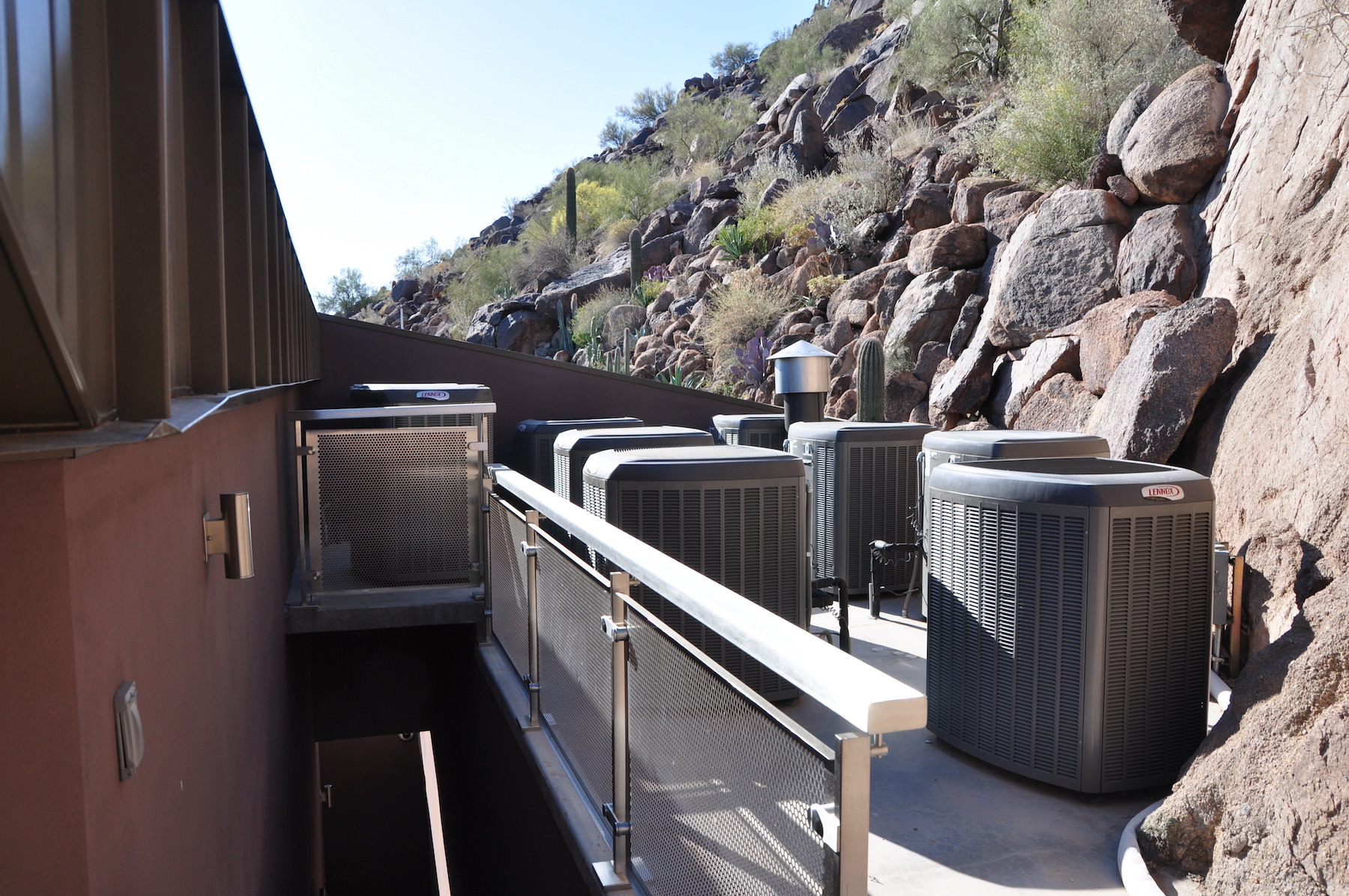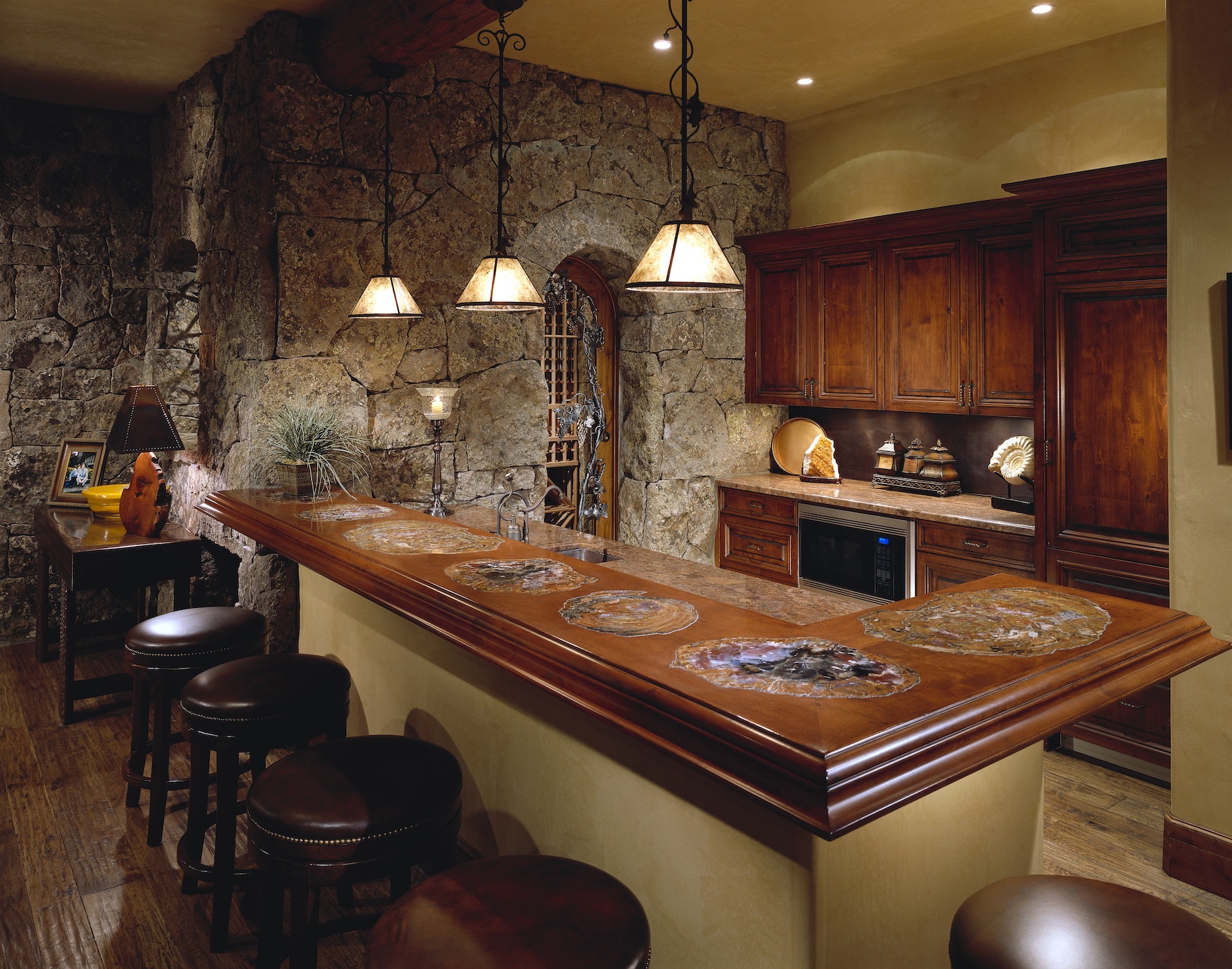If you’re building a new home or renovating an existing one, consider building green, as you weigh initial costs against long-time energy and lifestyle benefits. The design concepts and components that you select in our beautiful but often brutal Sonoran Desert will depend on various factors, including our Southwest location, your style, and your budget.
Drawing boards
First, communicate your dreams and vision with your architect, interior designer, and landscape architect. Chat with each to envision the design of your new abode, making sure to outline your commitment to eco-conscious building and how much you are willing to spend.
Think about including passive components up front that are integral to the residence and that can be added without considerable expense, says architect Douglas B. Sydnor, FAIA, who opened Scottsdale-based firm Douglas Sydnor Architect and Associates Inc. in 1993. In 45 years of local practice, the award-winning architect has completed approximately 225 projects, including custom single-family and multi-family residential homes.
First and foremost, Sydnor recommends optimizing the orientation of the home with respect to the sun. In Arizona, north/south facing homes are more energy efficient.
Here are some of his other thoughts:
• Maximize opportunities to utilize natural light during the day to reduce energy consumption from interior lighting.
• Shade window areas with large overhangs or trees.
• Minimize windows on the west side of the home.
• Specify light-colored roofing systems to minimize heat absorption.
• Employ adequate insulation within the walls and roof — preferably using foam.
“A modern, energy-efficient heating, ventilation, and air-conditioning system consumes less energy while maintaining comfort,” explains interior designer Tanya Shively of Sesshu Designs, whose firm has been eco-consciously serving the Valley for 20 years.
Tim Larson is principal of La Casa Builders, a 32-year Scottsdale-based luxury home builder and renovator. He suggests installing solar arrays or at least the conduit for future solar power; high-efficiency double-pane low-E windows with thermal breaks; HVAC units of 20 to 26 SEER (Seasonal Energy Efficiency Ratio); a smart thermostat; a natural gas-powered tankless water-heating system; and spray foam exterior insulation on most wood-framed structures. Larson notes that exterior solar paint may be the next big thing to generate electricity for your home, as well.

Shively also shares that eco-friendly building materials, although a little more expensive upfront, promote healthier indoor air quality and reduce the carbon footprint associated with manufacturing and transportation. Consider sustainable and non-toxic materials. Look for options such as reclaimed wood, bamboo, recycled metal or other materials, and low-
VOC paints to reduce environmental impact.
Syndor adds that when possible, preference should be given to local and natural building companies and products located within a maximum of 500 miles of the project site.
Thinking inside the box
Energy-efficient lighting, a moderate initial investment, includes LED fixtures. “LED lighting consumes less electricity, lasts longer, and can be designed for various lighting needs in your home,” Shively explains, noting that a handy automation system can control lighting, as well as window shades and HVAC.

Sydnor suggests low-flow plumbing fixtures; operable windows for natural ventilation; and interior ceiling and exterior soffit fans for air movement.
Shively notes that an easy way to reduce electricity consumption is through the use of ENERGY STAR rated appliances like refrigerators, dishwashers, washers, and dryers, which can be found through the energystar.gov website.
Consider indoor plants to improve indoor air quality, and use materials like jute or organic fabrics for rugs, blankets, and other decor items, she says.
Plant eco-friendly landscaping
Mike Robison has owned Sustain Scape LLC since 2009, a design-build landscape architecture company that focuses on custom residential and smaller
commercial projects.
His priority: Plant the right trees for shading the home. “This will also help offset the heat island effect from all of the concrete and asphalt in our Valley,” says Robison, an ASU graduate.

An efficient water-conscious irrigation system is also important, especially when you’re beginning. “We now have controllers and sensors and even sprinkler heads that will help conserve and reduce water use, which is a precious commodity in the desert,” he says.
Also consider rainwater harvesting systems, which are relatively inexpensive.
Plan your layout and the water needs. “Point-source irrigation systems are a very effective way of getting the correct amount of water to vegetation to help ensure it will thrive,” Robison adds.
Include low maintenance in the plan. “There are beautiful landscapes in the Phoenix metro area that are very nice and lavish and lush,” he says. “But these can cost a fair amount of money and water.”
Frank Aazami, principal and founder of the Private Client Group at Russ Lyon | Sotheby’s International Realty in Scottsdale notes that these types of eco-additions to your home can be rewarding in the long run, potentially making it more valuable for potential buyers in the future. “[Buyers] will pay a premium when they are installed and positioned correctly,” says. “They value efficiency and operating costs.”
Read more Home articles from Green Living.
Header photo: Cummings Residence, Paradise Valley. This view shows the north facing dual-pane glazing, which is appropriate for this exposure. Photo courtesy of Doug Sydnor.






